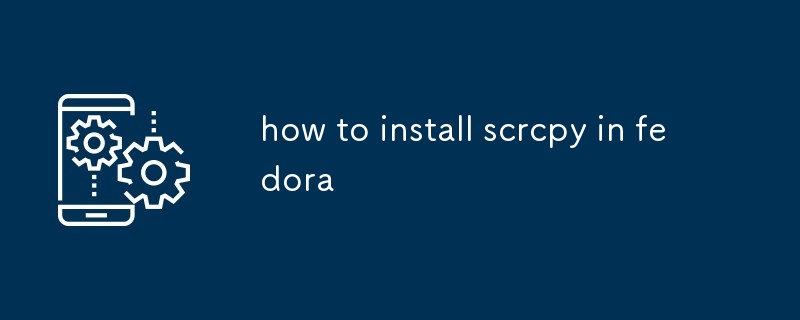Home >Software Tutorial >Mobile Application >how to install scrcpy in fedora
how to install scrcpy in fedora
- DDDOriginal
- 2024-09-04 14:56:151006browse
This article provides a step-by-step guide on how to install and run scrcpy, a command-line tool used to mirror and control an Android device over USB, on a Fedora operating system.

How to install scrcpy in fedora
Scrcpy is a command-line tool that can be used to mirror and control an Android device over USB. It can be installed on Fedora using the following steps:
- Add the EPEL repository:
<code>$ sudo dnf install https://dl.fedoraproject.org/pub/epel/epel-release-latest-8.noarch.rpm</code>
- Install scrcpy:
<code>$ sudo dnf install scrcpy</code>
How do I run scrcpy on Fedora?
To run scrcpy, connect your Android device to your computer using a USB cable. Then, open a terminal and type the following command:
<code>$ scrcpy</code>
This will start scrcpy and display your Android device's screen on your computer. You can now use your computer's mouse and keyboard to control your Android device.
What are the prerequisites for installing scrcpy on Fedora?
The following are the prerequisites for installing scrcpy on Fedora:
- A computer running Fedora 28 or later
- An Android device with USB debugging enabled
- A USB cable to connect your Android device to your computer
- The EPEL repository enabled
How to ensure scrcpy works properly in Fedora environment?
To ensure scrcpy works properly in a Fedora environment, you should do the following:
- Make sure that your Android device is connected to your computer using a USB cable.
- Make sure that USB debugging is enabled on your Android device.
- Install the scrcpy package using the commands provided in the first section.
- Run scrcpy using the command provided in the second section.
The above is the detailed content of how to install scrcpy in fedora. For more information, please follow other related articles on the PHP Chinese website!
Related articles
See more- How to allow multiple users to use Youku membership? Detailed explanation on how to use multiple members of Youku!
- How to bind bank card and check balance using WeChat mobile phone operation guide
- Share how to export national karaoke accompaniment and teach you how to extract song accompaniment
- A simple guide to batch transfer photos from iPhone to computer
- Share the iQiyi member login method: how to let others scan the code to log in, so that two people can share a VIP account

